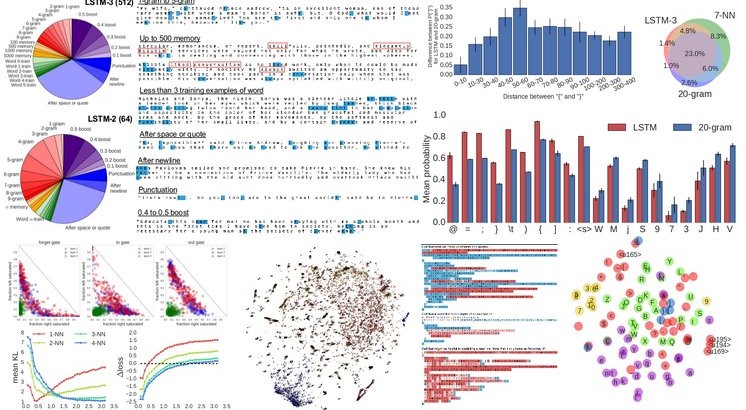Recurrent Neural Networks (RNNs), and specifically a variant with Long Short-Term Memory (LSTM), are enjoying renewed interest as a result of successful applications in a wide range of machine learning problems that involve sequential data. However, while LSTMs provide exceptional results in practice, the source of their performance and their limitations remain rather poorly understood. Using character-level language models as an interpretable testbed, we aim to bridge this gap by providing a comprehensive analysis of their representations, predictions and error types. In particular, our experiments reveal the existence of interpretable cells that keep track of long-range dependencies such as line lengths, quotes and brackets. Moreover, an extensive analysis with finite horizon n-gram models suggest that these dependencies are actively discovered and utilized by the networks. Finally, we provide detailed error analysis that suggests areas for further study.
